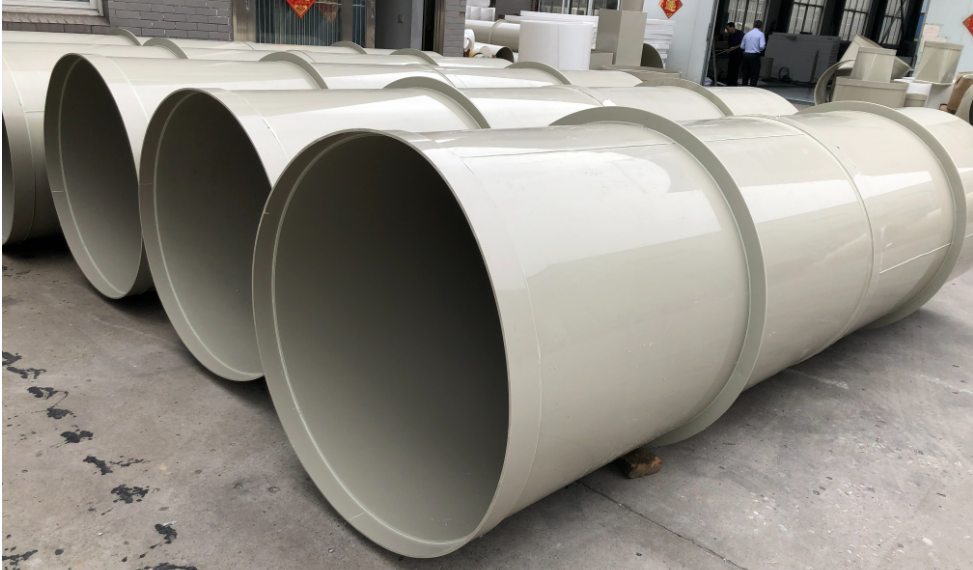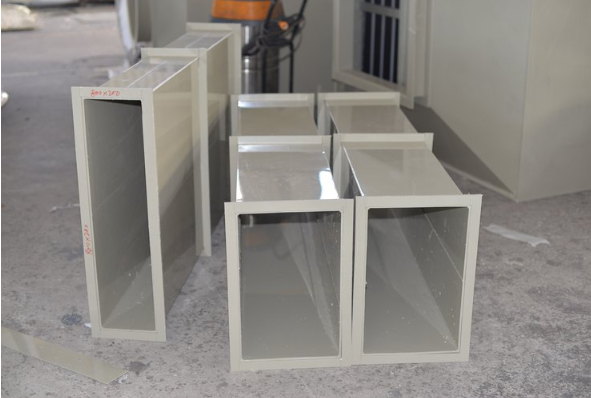Common Duct Materials
1.Metal ducts: common metal ducts include galvanized steel ducts, stainless steel ducts and aluminum ducts. Galvanized steel duct price is relatively low, has good mechanical strength and fire performance, the most widely used, in general industrial and civil building ventilation system can see its figure. Stainless steel ducts have excellent corrosion resistance and are suitable for chemical, food and other industries with high requirements for hygiene and corrosion resistance, such as the ventilation ducts of food processing plants, stainless steel ducts are often used to ensure the purity of the air and the durability of the ducts. Aluminum plate duct is lightweight and not easy to produce sparks when collision, so it will be used in places with explosion-proof requirements, such as coal mine underground ventilation system.
2.Composite duct: Composite duct is made of a variety of materials composite, generally including thermal insulation materials and surface materials. For example, phenolic composite duct, it is phenolic foam as the core material, the surface covered with aluminum foil and other materials, with lightweight, good thermal insulation performance, sound insulation effect, etc., commonly used in the air conditioning and ventilation system with high requirements for thermal insulation and sound insulation, such as hotels, office buildings, central air conditioning ducts. There is also glass-magnesium composite air duct, which has excellent fireproof performance and high strength, and is used more in some buildings with strict fire safety requirements, such as shopping malls, hospitals and other places.
3.Polymer duct: Polymer duct is made of polymer material, such as polyvinyl chloride (PVC) duct, PVC duct has the characteristics of strong corrosion resistance, low price, easy installation, etc., which is widely used in some industrial places with corrosive gas emission, such as the ventilation system of electroplating workshop. However, PVC ducts have poor high temperature resistance and relatively narrow temperature range.

How to size ducts for 20000 air volume.
1.Assumed air velocity method
The assumed wind speed method is a common and relatively simple calculation method for determining the duct size required for 20,000 airflow. The core formula is: duct size (cross-sectional area) = air volume / air velocity / 3600. The principle of this formula is based on the relationship between flow rate, velocity and time. The unit of air volume is usually cubic meters per hour (m³/h), which indicates the volume of air passing through the duct in a unit of time; the unit of wind speed is meters per second (m/s), which describes the speed of air flowing through the duct; and 3600 is the conversion factor for converting hours to seconds, which gives the cross-sectional area of the duct in square meters (m²).
When applying this, it is first necessary to make reasonable assumptions about the wind speed. The choice of wind speed is not arbitrary, but to consider a variety of factors. For example, in the civil building ventilation system, if the noise control requirements are high, the wind speed should not be too large, generally the main duct wind speed can be controlled at 4 – 7m / s; in industrial plants and other relatively low noise requirements of the place, in order to reduce the size of the duct, reduce costs, the main duct wind speed can be increased appropriately, such as 6 – 12m / s . Suppose we have to determine the duct size for 20000m³/h airflow in an industrial project with general noise requirement, assuming the air velocity is 8m/s. According to the formula, the cross-sectional area of the duct = 20000÷8÷3600 ≈ 0.694m².
If a circular duct is used, we can further calculate the duct diameter according to the formula of the area of a circle S = πr² (where S is the area and r is the radius). From 0.694 = 3.14×r², we can get r² = 0.694÷3.14 ≈ 0.221, r ≈ 0.47m, then the diameter d = 2r ≈ 0.94m. If you choose rectangular duct, you also need to determine the ratio of length and width according to the actual installation space and design requirements, assuming that the ratio of length and width of 2:1, set the width of x meters, then the length of 2x meters, 2x × x = 0.694, that is, 2x ² = 0.694, can be obtained x ² = 0.347, x ≈ 0.59m, then the length of 2x ≈ 1.18m, that is, the size of the rectangular air duct can be 1180mm × 590mm.
2. Introduction to other calculation methods
In addition to the assumption of wind speed method, there are also a variety of methods to calculate the size of the duct, such as specific resistance method, area method, flow coefficient method. Specific resistance method is to calculate the friction resistance per unit length of the duct (specific resistance), combined with the total resistance of the duct and the air volume to determine the size of the duct, this method of calculation is relatively complex, you need to consider more resistance factors, such as the roughness of the duct, air viscosity, and so on. Area method is based on the known cross-sectional area of the duct and wind speed to calculate the air volume, and the assumption of wind speed method of calculation of the opposite idea, in the known air inference duct size, you need to determine the appropriate size through a number of trial calculations. Flow coefficient method is based on the flow coefficient of the inlet or outlet of the duct, combined with the wind speed and cross-sectional area to calculate the air volume, the method needs to know the flow coefficient of the duct in advance, and the flow coefficient is usually provided by the manufacturer or determined by experiments.
However, in practical engineering applications, the assumed air velocity method is most commonly used because it is relatively simple and intuitive to calculate, and can meet the accuracy requirements of most projects. In this discussion on 20000 air volume duct sizing, we also focus on the assumed air velocity method as an example to analyze and calculate, so that we can understand and grasp the basic method of duct sizing more clearly.

